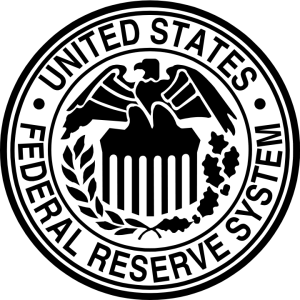1913 was a momentous year for the USA. We received the Federal Reserve and hired the IRS to make sure the bankers got paid. But who were the movers and shakers that caused all this to happen? Nelson Aldrich was a major player and deserves a little attention.
In 1906 Aldrich sold his interest in the Rhode Island street railway system to the New York, New Haven and Hartford Railroad, whose president was J. P. Morgan’s loyal ally, Charles Sanger Mellen. Also in 1906 Aldrich and other American financiers invested heavily in mines and rubber in the Belgian Congo. They supported Belgium’s King Leopold II, who had imposed slave labor conditions in the colony.
In 1907, J.P. Morgan published rumors that the Knickerbocker Trust Company was insolvent. Some later historians believe this was a deliberate act of market manipulation which precipitated the Panic of 1907, and consolidated the preeminence of the banks controlled by Morgan. The panic itself led to the passage of the Aldrich–Vreeland Act in 1908, which established the National Monetary Commission, sponsored and headed by Aldrich. After consulting with European central bankers and issuing a series of 30 reports, this commission drew up the Aldrich Plan, forming the basis for the Federal Reserve System. After passage of the Aldrich-Vreeland Act, Aldrich declared “I am going to have a central bank in this country.”
November 1910: A secret meeting on Jekyll Island in which Aldrich and other well connected financiers attended: Nelson W. Aldrich; Paul Warburg; Frank Vanderlip, president of National City Bank; Henry P. Davison, a J.P. Morgan partner; Benjamin Strong, vice president of Banker’s Trust Co.; and A. Piatt Andrew, former secretary of the National Monetary Commission and then assistant secretary of the Treasury. They even changed their names, traveled separately and told no one where they were going for this ultra-secret meeting to craft the new Federal Reserve and the federal income tax amendment.
What was the result of this secret meeting?
On February 3rd 1913: The 16th Amendment was ratified: Think IRS and Income Tax
December 23rd of 1913: Federal Reserve Act: gave a cabal of private bankers control of our monetary system.
A connoisseur and collector of paintings, Aldrich maintained a luxurious estate and consorted almost exclusively with the social and economic elite. His daughter Abby was the wife of John D. Rockefeller, Jr. Aldrich died on April 16, 1915.
Woodrow Wilson after creating the Federal Reserve reportedly said:
“I am a most unhappy man*. I have unwittingly ruined my country. A great industrial nation is controlled by its system of credit. Our system of credit is concentrated. The growth of the nation, therefore, and all our activities are in the hands of a few men. We have come to be one of the worst ruled, one of the most completely controlled and dominated governments in the civilized world. No longer a government by free opinion, no longer a government by conviction and the vote of the majority, but a government by the opinion and duress of a small group of dominant men.”
~ Woodrow Wilson
“Since I entered politics, I have chiefly had men’s views confided to me privately. Some of the biggest men in the U.S., in the field of commerce and manufacturing, are afraid of somebody, are afraid of something. They know that there is a power somewhere so organized, so subtle, so watchful, so interlocked, so complete, so pervasive, that they had better not speak above their breath when they speak in condemnation of it.”
~Woodrow Wilson – In The New Freedom (1913)
* There is controversy on the sourcing and context of the Wilson quotes above surrounding “I am a most unhappy man…” . You can read more on this here: Wikiquote Talk:Woodrow Wilson

